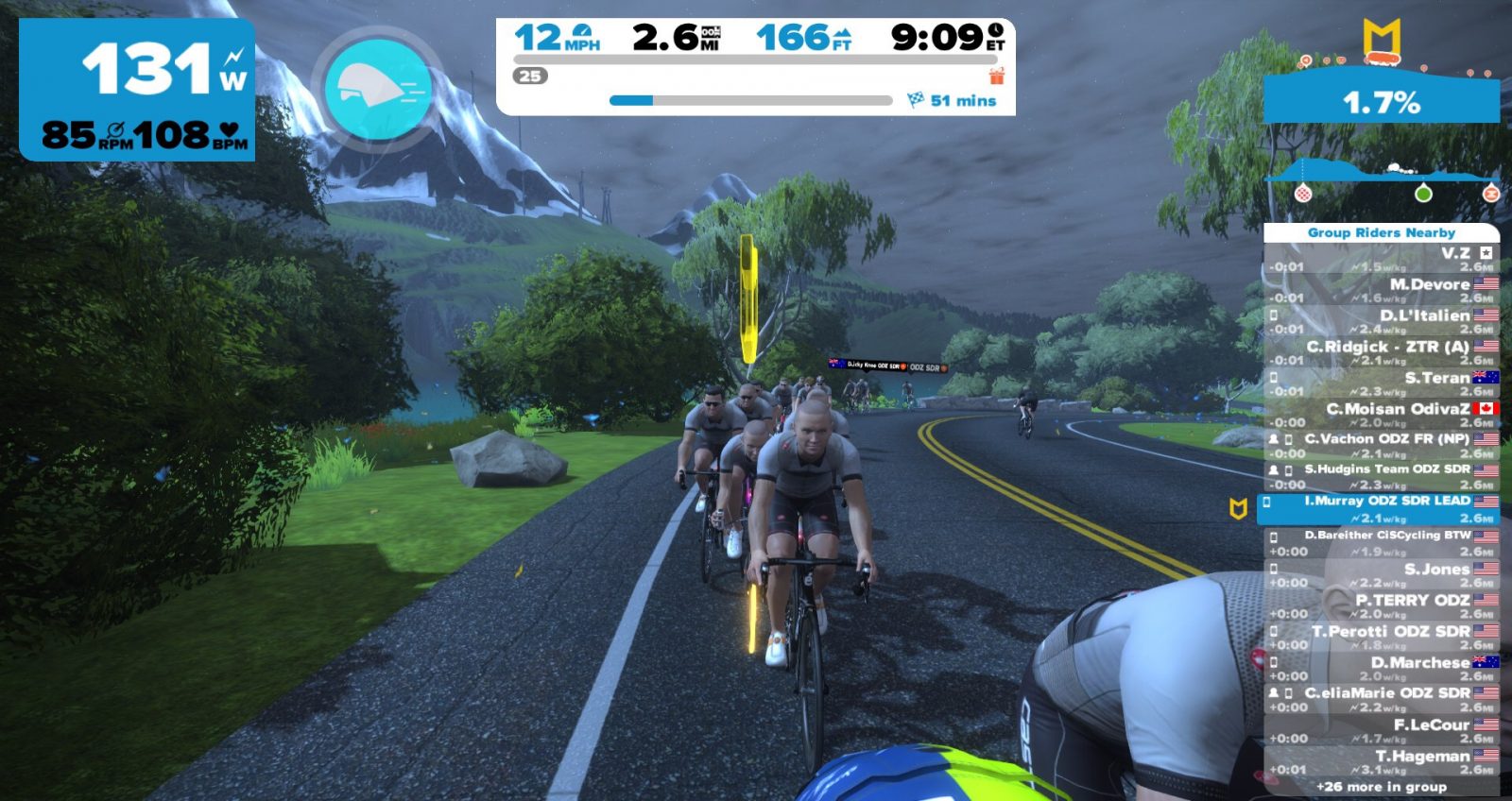Castelli SkillZ and DrillZ Ride, 26 April – Climbing is equivalent to public speaking for many people. We know it must be done from time to time, but we dread every second leading up to the event. Most of the time, our fears are unfounded, or the fear is based on not being properly prepared for what we will undertake.
In today’s class, we addressed three techniques to help make climbing a more palatable endeavor. To see the video of the class to simply watch or follow along, check out Zwift Live by ODZ on Facebook or watch it below:
For some unfathomable reason, many people hate going uphill on a bike. It’s just like going downhill (only a lot harder, and you could be reduced to walking to the top while pushing your bike. Other than that, it is pretty much the same.)
Ok, so maybe it’s not much fun, but like everything we cover on SkillZ and DrillZ, there are techniques that can make climbing a hill not such a daunting task. During this week’s class, we targeted three specific areas that, when used correctly, will help riders get over all but the steepest climbs without burning through their energy stores. Like always, though, we started our class by working on positioning. During the warm-up session, I tasked riders with moving backwards and forwards within the group to try to understand the effects of the draft and the efforts required to move to the front.
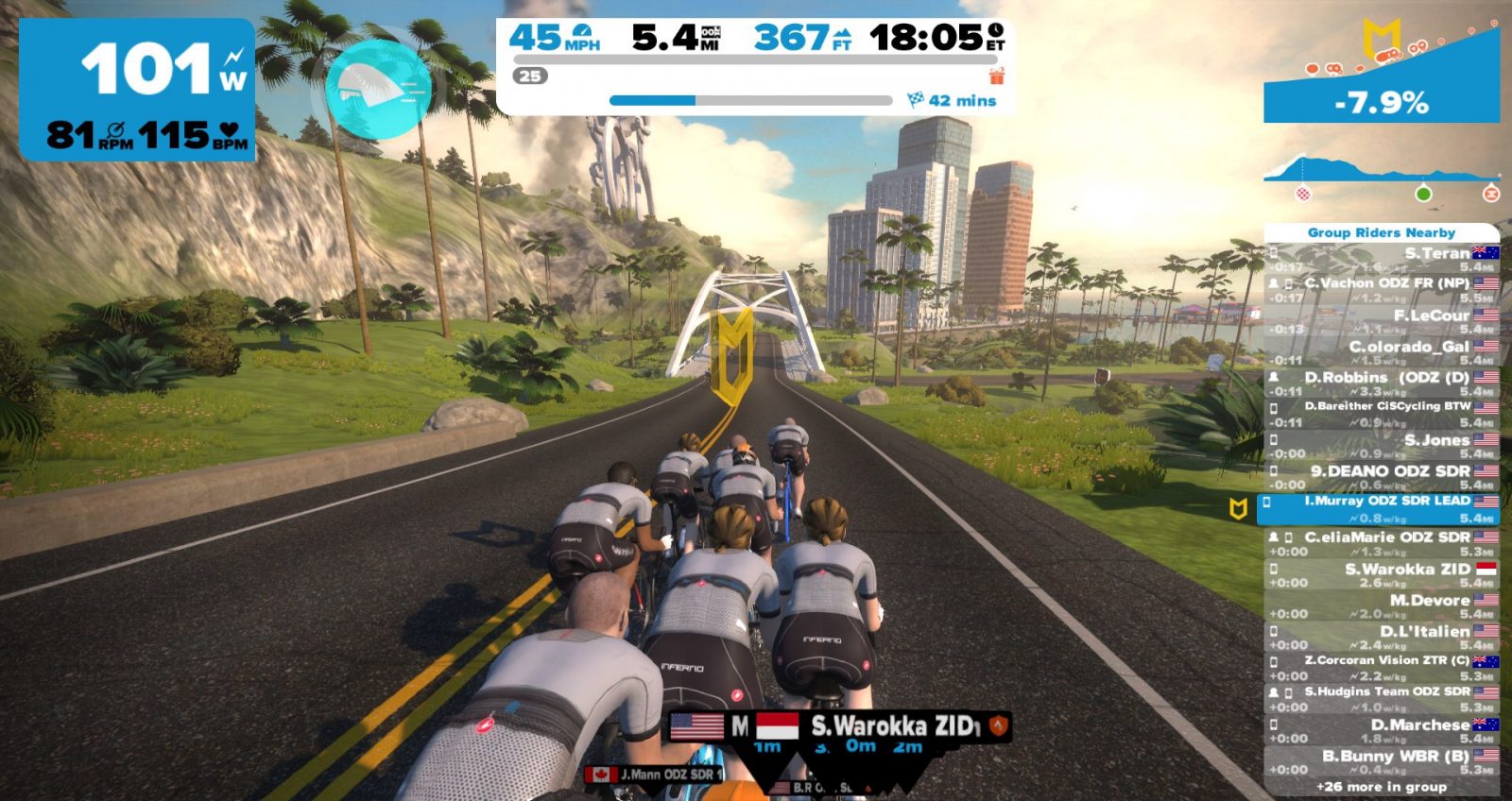
It’s Not All About Being Skinny
Despite popular opinion to the contrary, climbing is not all about being skinny. Sure, it helps to be under 60 kgs, but that is only if you can generate a fair amount of power. A 60 kg rider who can only generate 120W is not going to fair much better than a 100 kg rider pushing 200W. Sure, there will be a small difference due to gravity, but it will not be insurmountable. The factor that influences climbing the most, in my opinion, is power management.
On the flats, a ten percent drop in power due to fatigue can translate to a bad day, but if you can hide in the draft, you may be able to recover or last until the end. On climbs, a 10 percent drop in power means that the front of the race will quickly disappear, leaving you to suffer through the solitary drudge up the rest of the climb. It’s pretty much the definition of the opposite of awesome. So, how do we ensure that we don’t fade to black while climbing the bigger hills and mountains? Well, there are a few simple things we can do.
Feel the Rhythm
First, we need to take a look at the length, grade, and location of the climb. If the climb is early in the race, why on earth are we going to attack it like a crazy person? Unless the race is a climb followed by all downhill, there is no need to go out like your hair is on fire. The climbs that are not decisive in the grand scheme of things need to be addressed as such. Now, that does not mean we loligag up the climb. Au contraire mon frere, we should use that climb to dispatch some of the weaker climbers who may be able to sprint or make a late break if the climb is the only decisive terrain for a long while. Or, we should keep the pace high enough to discourage attacks. That’s where climbing at a steady effort and cadence come into play. Team Sky and Movistar are masters at this. Watch any mountain stage that either of those two teams want to control. The pace is never easy, and the bigger or weaker riders get shelled early and often. However, the majority of the riders can stay with the group, albeit while suffering a little bit. Why are they able to hang with such a tough tempo? Well, that’s because the pace is consistent despite being high. Our bodies adapt quickly, and as long as the effort is not above our threshold, we can usually settle in and maintain for a good while. Provided the accelerations or few and small, riders can just get into their own rhythm and match the speed of the group. This reduces the number of matches being burned, as you do not have to call on your reserves to catch back on to a wheel.
To work on this skill, we went up the reverse KOM and the Esses maintaining a steady cadence and effort. Sure, we spread out a little, as gravity had a bit of play, but we stayed fairly well grouped other than those who took a flyer (talking to you T. Hageman! ;)). We entered the base of the climb at 2.5 and periodically lifted the pace, finishing off the climb at 3.0. That was a very small acceleration, and those who could hold that effort had no problem bunching up and working together. We repeated that drill as we went through the Esses, but the rolling nature and short duration of those climbs highlighted the difficulty of maintaining a constant tempo. The reverse KOM, though, was a great example of how to execute that technique.
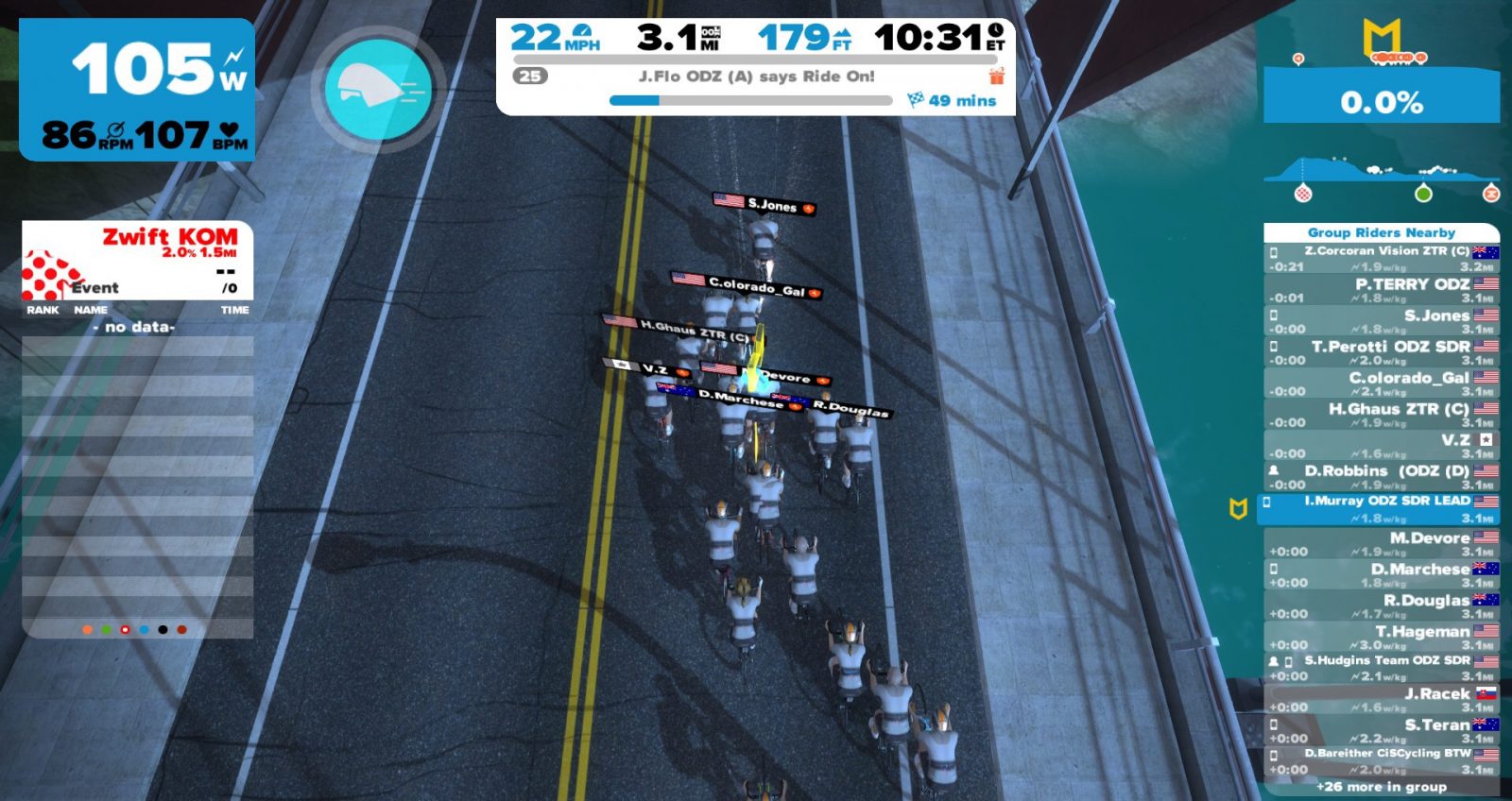
Sitting and Standing
On the next iteration of the reverse KOM, we transitioned to switching between seated and standing. Determining when you should remain in the saddle or stand is really a matter of personal preference. If I am fairly fresh and not throwing down, I prefer to stay seated and spin up the climb. If I plan to attack or anticipate attacks, I may spend more time out of the saddle, as I can respond and accelerate quicker. Standing has the benefit of allowing you to use your bodyweight to put power into the pedals, which is a great way to give your butt a break during a steady tempo climb. It also taxes the system more.
Do your own experiment. Get out of the saddle and push a little higher wattage than when you were sitting. Your heart rate will go up significantly quicker than had you just accelerated from a seated position. The difference is that you may not feel comfortable or able to lift the pace from your seated position, and you surely will not be able to do it as quickly or violently as when standing.
For our drill, we practiced moving from the seated position at 2.5 W/kg, shifting up (harder) twice while coming out of the saddle and holding 3.0-3.5. After about a minute, we shifted back to our original gearing and sat down. We repeated it a few more times up the climb and then through the Esses before getting ready for the next drill.
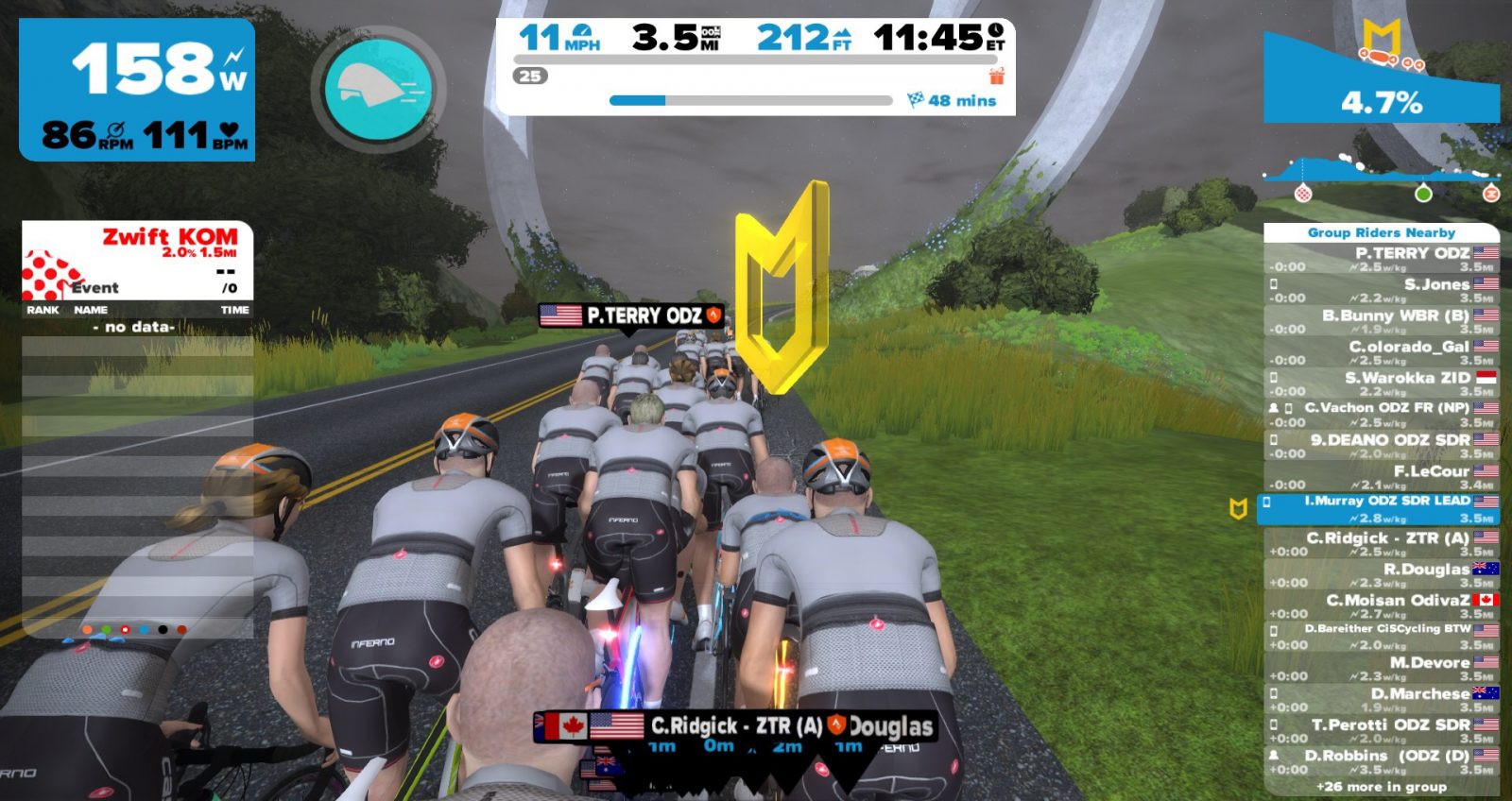
Attacking Out of the Saddle
On our next trip up the reverse KOM, we stayed out of the saddle the whole time to work on attacking and bringing our body up to but not over our own redline (think blowing up your engine). The drill was to have a short but massive acceleration and then settling in at 3.5 W/kg before returning to 2.5 W/kg for a short recovery.
This drill was a bit harder and had us strewn across the mountain, but it showed riders how to manage their efforts. On the climbs, this is extremely important. The price you pay for overdoing it on a climb is exponentially greater than on the flats. On the flats, you can coast or soft pedal a good bit before your momentum completely falls away. On a climb, once you start to lock up, you’re done. It is very difficult to recover on a climb, as the pedaling never gets easier. It is very similar to riding in erg mode on the trainer when you slow your cadence down below 50 RPMs. At that point, you are simply mashing the pedals trying to turn them over. With a lot of effort over some time, you can get it going again, but the cost of energy wasted is tremendous. It’s the same thing on a climb.
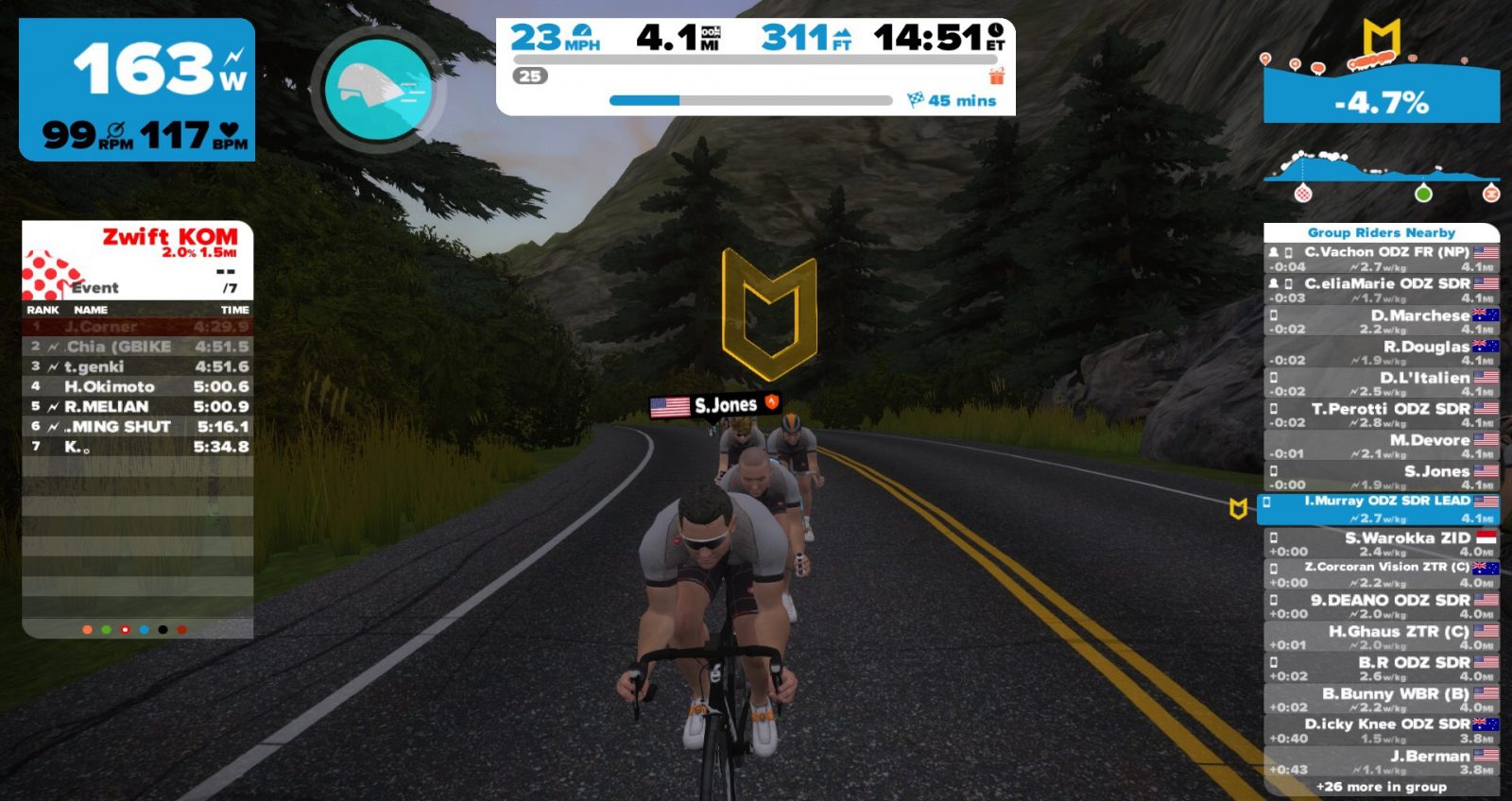
Going Too Hard
Since we still had a few minutes, we rolled back to the Esses for the last few minutes of the class. The last, impromptu drill consisted of attacking at an effort over redline any time the grade went above two percent, riding at 2.5 W/kg between zero and two percent, and soft pedaling any descents. The whole purpose of this drill was to show the effects of attacking too hard and/or too often. Sure enough, many legs exploded in the last two minutes of the ride, but everyone got the point: ride smart. On that note, we transitioned to an easy spin for the remaining five minutes of the ride.
Conclusion
Remember, climbing is not much different than sprinting when it comes to having or taking an advantage. Sure, some people are naturally predisposed to be better climbers than others due to size, but the ability to time attacks and manage one’s effort can neutralize any size advantage. Plus, throwing down a crazy-hard attack may just get you away, as the traditional climbers may not think you can hold it or manage your effort after the attack. The next time you ride the hilly course, Box Hill, or the Volcano Climb, practice laying down some attacks and managing the efforts. Start easy and build up, just to see what you can do. If you know your limits, you can develop your tactics accordingly.
That’s it for this week. Next week we will go back to covering bridging a gap, but we will focus on doing it after a natural split in the bunch rather than an attack. Until then, Ride On!
